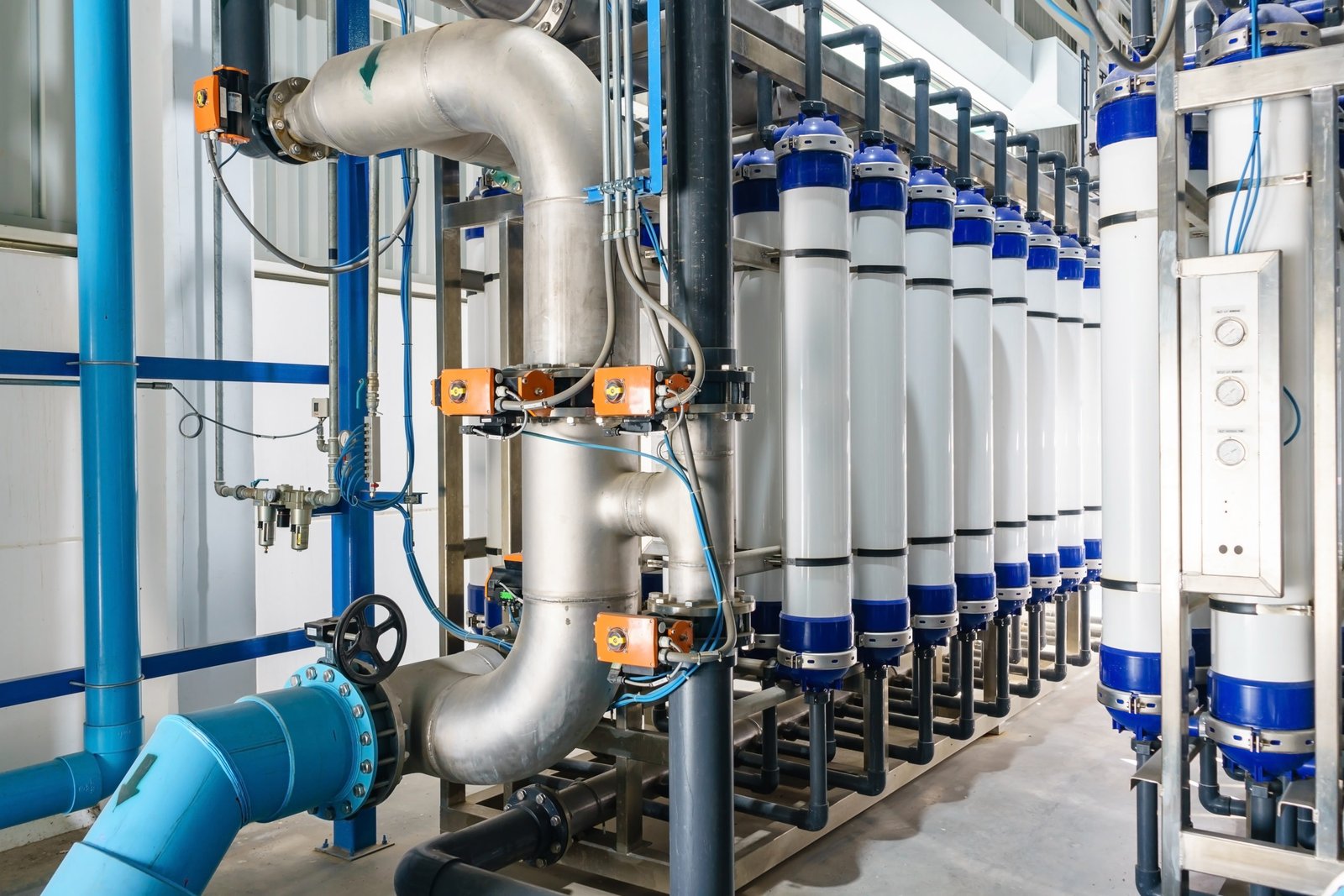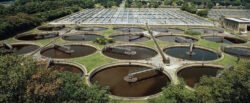Understanding Chlorine Contact Tank Water Treatment: A Comprehensive Analysis
Chlorine contact tank water treatment is a fundamental process in water treatment facilities worldwide, serving as a critical part of the disinfection stage in the treatment of potable water. This article delves deeply into the science, technology, and practical application of chlorine contact tanks, exploring their design, operational principles, benefits, challenges, and future directions in the field of water treatment.
Introduction to Water Treatment
Water treatment primarily aims to produce drinking water that meets the health and safety standards prescribed by regulatory bodies. The treatment process involves several stages, including coagulation, sedimentation, filtration, and disinfection. Among these, disinfection plays a critical role in ensuring that pathogens, which can cause waterborne diseases, are effectively eliminated.
Importance of Disinfection
Disinfection is essential for:
- Public Health: Preventing outbreaks of diseases such as cholera, dysentery, and typhoid fever.
- Regulatory Compliance: Meeting standards set by organizations such as the Environmental Protection Agency (EPA) in the United States, which mandates that drinking water must be free of harmful microorganisms.
- Physical and Chemical Safety: Ensuring that water is not only microbiologically safe but that it does not contain harmful levels of chemicals.
Chlorination Basics
Among the various disinfection methods, chlorination is one of the oldest and most widely used techniques. Chlorine is effective against bacteria, viruses, and other pathogens due to its strong oxidizing properties. The two primary forms of chlorine used in water treatment are:
- Gaseous Chlorine: A yellow-green gas that can be liquefied. It is a potent disinfectant but requires careful handling due to its toxic nature.
- Chlorine Compounds: These include sodium hypochlorite (liquid bleach) and calcium hypochlorite (solid chlorine). They are safer to handle and store compared to gaseous chlorine.
Chlorine Contact Tanks: Definition and Purpose
A chlorine contact tank is a vessel in which water and chlorine are mixed to ensure adequate disinfection before the water is distributed to consumers. The primary purpose of the contact tank is to provide sufficient contact time between the chlorine and the microorganisms present in the water. This contact time is crucial because:
- It allows the chlorine to effectively penetrate and destroy the microorganisms.
- It ensures that the required chlorine residual remains in the water as a protective measure against any potential contamination that may occur after treatment.
Design of Chlorine Contact Tanks
The design of a chlorine contact tank is influenced by several factors, including:
- Water Flow Rate: The design must accommodate the average flow rate of the water entering the treatment facility.
- Contact Time: The required contact time (often referred to as "detention time") is determined based on the water quality and the concentration of chlorine used. Typical detention times range from 30 to 90 minutes.
- Tank Geometry: Contact tanks can be designed as rectangular or circular structures. Rectangular tanks are popular due to their ease of construction and operation, whereas circular tanks provide a more uniform flow distribution.
Hydraulic Considerations
Hydraulic design considerations ensure that water flows evenly throughout the tank. Common features include:
- Inlet and Outlet Configurations: Properly designed inlet and outlet structures minimize short-circuiting (where water bypasses disinfection) and ensure uniform flow.
- Baffles: Internal baffles may be employed to direct flow patterns and prevent dead zones where water stagnates.
- Mixing Mechanisms: In some designs, mixers may be installed to enhance the distribution of chlorine in the water.
Operational Principles of Chlorine Contact Tanks
Chlorine Dosage
The amount of chlorine added depends on the quality of the incoming water and the target residual chlorine levels. Factors influencing chlorine dosage include:
- Microbial Load: Higher contaminant levels require more chlorine.
- Organic Material: Presence of organic matter can react with chlorine, reducing its efficacy.
- Temperature and pH: Both factors significantly influence chlorine’s disinfecting power, with higher temperatures and lower pH enhancing its effectiveness.
Reaction Kinetics
The disinfection process is not instantaneous. The reaction between chlorine and microorganisms can be described by rate equations that consider:
- Contact Time: Longer contact times typically result in more effective disinfection.
- Chlorine Concentration: Higher concentrations can reduce the necessary contact time.
- Microbial Resistance: Some bacteria are more resistant to chlorine, which may require adjustments in dosage and contact time.
Monitoring and Control Systems
Effective monitoring of chlorine levels, flow rates, and other operational parameters is crucial. Automated control systems are often employed to ensure:
- Consistent chlorine residual levels post-disinfection.
- Adherence to regulatory standards.
- Immediate response capabilities in case of fluctuations in water quality or flow.
The Benefits of Using Chlorine Contact Tanks
Efficacy in Pathogen Reduction
Chlorine contact tanks are remarkably effective for reducing a wide range of pathogens, including:
- Bacteria: Effective against most common waterborne bacteria.
- Viruses: Chlorine has a demonstrated capacity to inactivate viruses, including norovirus and rotavirus.
- Protozoa: Resistance varies; some protozoan pathogens such as Giardia can survive chlorination unless proper contact times and dosages are used.
Residual Protection
One of the key advantages of chlorination is the ability to maintain a residual level of chlorine throughout the distribution system. This residual acts as an additional barrier to pathogens that may enter the system post-treatment.
Cost-Effectiveness
While there are initial capital costs associated with building and maintaining chlorine contact tanks, chlorination is relatively inexpensive compared to other disinfection methods, such as UV radiation or ozonation.
Challenges and Limitations of Chlorine Contact Tanks
Formation of Disinfection By-Products (DBPs)
One of the most significant challenges associated with chlorination is the formation of disinfection by-products (DBPs), such as trihalomethanes (THMs) and haloacetic acids (HAAs). These compounds are formed when chlorine reacts with organic materials in the water. Exposure to DBPs has been linked to potential health risks, including certain cancers and reproductive issues.
Taste and Odor Issues
Chlorine can impart a distinct taste and odor to treated water, leading to public dissatisfaction. Although chlorination is effective, the sensory qualities of drinking water are crucial for consumer acceptance.
Equipment Corrosion
Chlorine is highly corrosive, and components in contact with chlorine—such as pipes, fittings, and the tank itself—can deteriorate over time. This requires careful selection of materials and regular maintenance to ensure the longevity of infrastructure.
Microbial Resistance
Some pathogens exhibit resistance to chlorine disinfection, particularly if they are protected by biofilms or if they occur in very high concentrations. Continuous monitoring and adaptation of treatment strategies are necessary to combat these challenges.
Future Directions in Chlorine Contact Tank Water Treatment
The field of water treatment is constantly evolving. Several trends and advancements may shape the future of chlorine contact tank operations:
Advanced Monitoring Techniques
Emerging technologies, such as real-time monitoring systems and sensors, can enhance operational efficiency by providing instantaneous data on chlorine levels, flow rates, and water quality parameters. This enables water treatment facilities to make timely decisions and maintain compliance with regulations.
Alternative Disinfection Techniques
While chlorination remains prevalent, the exploration of alternative disinfection methods, such as UV treatment and advanced oxidation processes, could complement or replace traditional chlorination in specific applications. Hybrid systems that integrate multiple treatment methods could offer enhanced safety and efficiency.
Enhanced Coagulation Practices
Improving the pretreatment stage can significantly reduce the organic load entering the chlorine contact tank, thus minimizing the formation of DBPs. Innovations in coagulation and sedimentation techniques can enhance overall treatment efficiency and reduce potential disinfection challenges.
Regenerative Activity
Research into the regenerative capability of chlorine contact tanks is ongoing. By understanding how to optimize interactions between chlorine and the microbial community, it may be possible to enhance the effectiveness of disinfection while minimizing adverse effects.
Regulatory Frameworks
As public awareness surrounding water quality and health risks grows, regulatory bodies may introduce more stringent requirements regarding disinfection practices. This will necessitate investment in infrastructure and technology upgrades to comply with evolving standards.
Conclusion
Chlorine contact tank water treatment plays a crucial role in safeguarding public health by effectively disinfecting drinking water. While challenges such as the formation of disinfection by-products and equipment corrosion exist, the advantages of chlorination, particularly its cost-effectiveness and residual protection, make it a staple in water treatment practices. As technology advances and the demand for safe, high-quality drinking water increases, the future of chlorine contact tank operations will likely evolve to address emerging challenges while maintaining the core goal of providing safe water to communities.
As we move forward, it remains essential to invest in research, adapt to technological advancements, and engage with communities to ensure that our water treatment processes are not only effective but also sustainable and acceptable to those we serve.
The post Chlorine Contact Tank Water Treatment appeared first on Water & Wastewater.
source https://www.waterandwastewater.com/chlorine-contact-tank-water-treatment/


No comments:
Post a Comment